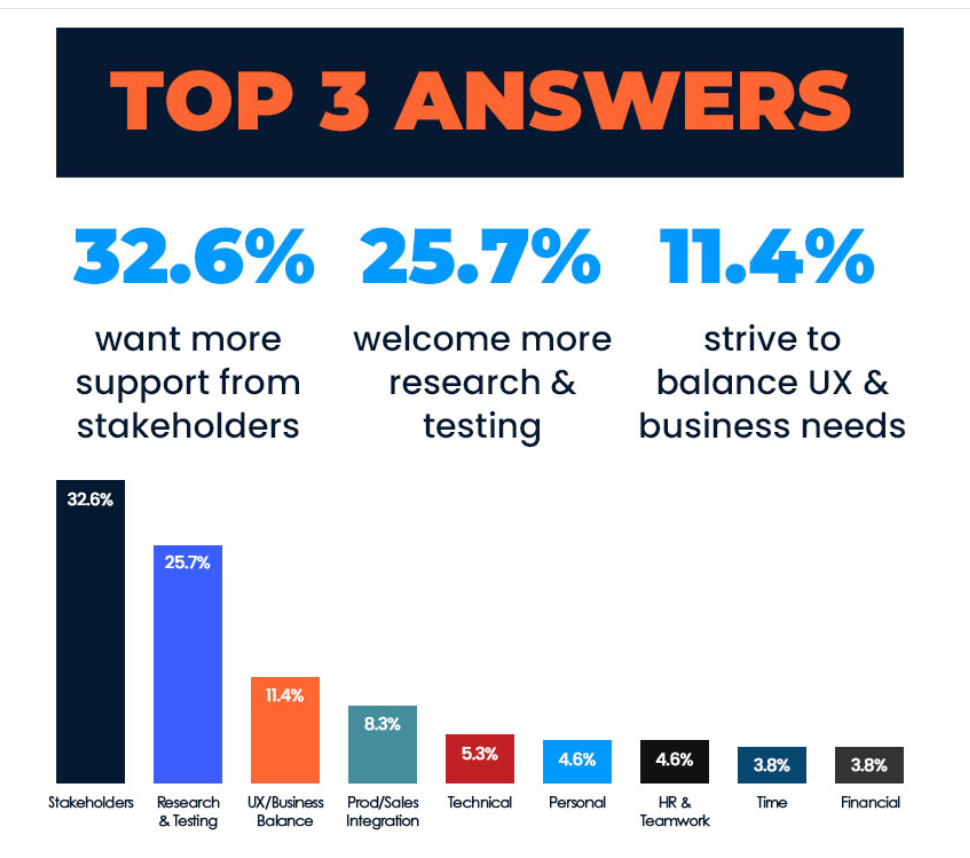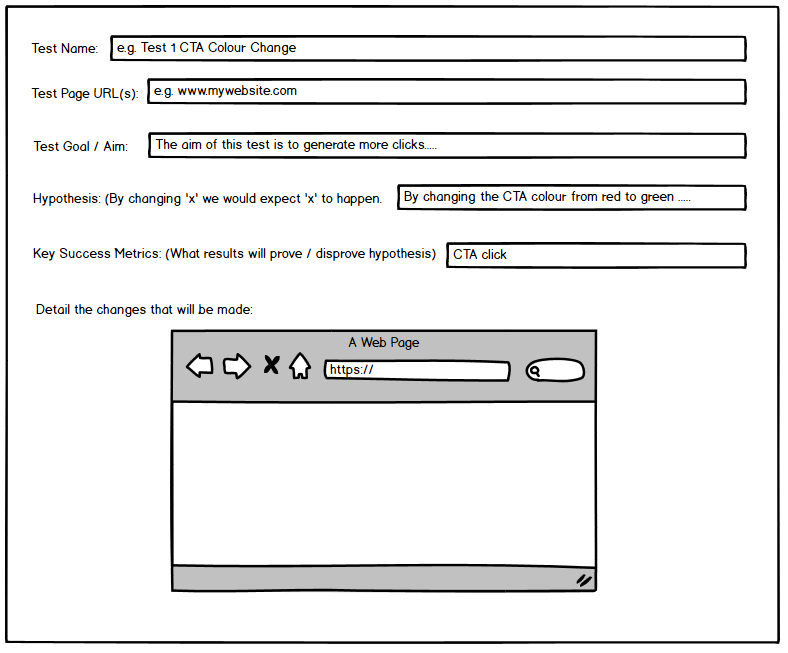Do any of these sound like you?
- I want to start AB testing but I’m getting push back from internal stakeholders
- I struggle with what to test first, and how I will manage and understand the data I collect
- UX is already an after thought, having to advocate testing also is hard
- Not sure where to start with integrating testing into the process
- I’m not a Developer and neither is my team, testing is too technical
If yes then then read on!
If none of the queries resonate with you, then perhaps it’s because you already have a great testing environment where you work. Which is a fantastic! Or maybe you don’t realise what other team members may be thinking?
Let me set the scene
In June this year we proudly sponsored The Bad Conference 2020, which was focused on UX design and featured world-class speakers discussing UX psychology and the use of behavioural science in research & design.
This was the first virtual conference that we have sponsored and we are proud to say that we were part of it.
During the conference, 130 attendees responded to our question : ‘What is your biggest UX challenge?
From these attendee responses we quickly realised that a lot of people faced the same issues and struggles. So I thought it would be good to elaborate on these in this post to see if you too are facing these same concerns, and if so try share some ideas and strategies to overcome these.
From speaking to many prospects and working with a huge range of industries and clients over the years I can hopefully provide some valuable solutions.
These were the most common answers we received

Stakeholder and client buy in
How to approach AB testing within your company (or with a client client) if this has never been considered before.
It’s would be too easy for me to say ‘just have a go’. If it is the internal processes, sign off, budget, changing the culture is the toughest part.
Start to think about how this could fit into your way of working. Who in the company can help drive this forward and champion this with you. Sound out your colleagues to see if anyone has used a testing platform before, or has had some experience with it. I’ll bet at least one person that you speak to will have.
In addition, Webtrends Optimize can help support highlighting the benefits of testing and its importance. We can do this via with short demos and meetings, either virtual or face to face (once it is safe to do so) – we even have a podcast which aims to talk to various industry figures, from different backgrounds and environments, to understand their perspectives and experiences with testing.
Don’t forget to start doing your research. Find out if your competitors are testing on their sites. If they are they and you’re not, they’re are likely to be getting a competitive advantage over you.
Review case studies to add some weight to your stakeholder and customer buy-in conversations.
Don’t forget we also offer a completely free trial to use our platform yourself, with no obligations to buy, if you want to dip your toe in the optimisation water and take a deeper look.
Not enough investment in research and where to start
Knowing what to test can be the most daunting hurdle, so start small: copy or button tests you can’t go far wrong with. As everyone who visits your site will be reading something and will be clicking on at least one button.
Then consider why do you think you should test an alternative? It could be a simple as red CTAs look more alarming but green CTAs look more encouraging. So from this we would expect more CTA click throughs. Simple right?
Webtrends Optimize offers unlimited conversion tracking and can also help you set up custom data collection, so you can capture AOV and product information. Or we even help you integrate your results from/to other tools such as GA. Which means ROI can always be tracked.
UX vs Business balance
This is a tough one to get right. But if you’re in this situation at the moment stick to what you think is the right thing to do. No one who you work with will be able to tell you the exact changes you should make on your website. This changes from industry, culture, time of year, external influences…
My advice to you would be to start coming up with hypotheses or design alternatives. Think about why you would like to know what performs better, and why you think each specific update may lead to different behaviour.
Then, if you can put this forward to your manager or colleagues, and they are interested you could start a free trial. See if you can use a few of your hypotheses to become your ‘proof on concept’ for AB testing.
Integrating product and sales
This is a perfect scenario where testing is invaluable.
Product teams want to know what customers think of their product or latest update.
Ask your customers with surveys, or maybe ask them to rate or review. All of these can be added to your site via testing or simple targets. Refine your segmentation to only show the target to customers who have looked at, or bought, the product of interest, explain you would like their insight on it, and there you have it. Priceless information for your product team.
Omni-channel alignment, product-marketing balance… these can also be aligned and tested. All traffic can be segmented or tailored on your side, through the aid of referral segmentation and query strings/parameters. This simply means getting organised. Get an invite to the marketing meeting a month or two before so that you can also be part of driving their campaign forward in the website.
Technical
The responses we had from attendees ranged from: “we have no Developers” to “governance of content” and “customer data”.
No Developers? No problem, we have a WYSIWYG (What You See Is What You Get) point & click tool which we call our Visual Editor. Segmentation is also easy with a drag & drop UI.
We also offer the option to add on our flexible support & services, either by hours or project, that you can use in for help with test creation, consultancy ideation, QA, whatever you need.
Or, if you have a little more budget to spend then you can also opt for our fully managed service. This provides you with a dedicated Optimisation Consultant (OC) and full access to our team including Developers, strategy, UX and QA.
Take a look at our pricing models or get in touch to see a little more as to how these work.
Governance of content can be tricky. Especially if team members or managers are slow to provide approval. But as reassurance you can always reduce the audience who sees your test variations. For example you could decide to only test on desktop, and only launch your AB test to 10% of your desktop audience. This means 90% of your Desktop customers will see your normal website version and a tiny 10% will see your test variation. Which limits the uncertainty or scepticism people in the team may have.
Lastly – customer data. If you decide to collect personal information as part of your test then yes you should be cautious however this is very rare, it all depends on your privacy policy and where the data is stored.
Personal
The main areas that people mentioned here was keeping up to date with the industry and broadening their skillset. Well, what better way than to jump in and have a go, as I said above we offer no obligation free trials and we would be more than happy to give you a quick demo and give you a few pointers.
HR and Teamwork
I think this response mainly relates to team size and team capabilities. Building a test in the WYSIWYG point & click visual editor is super straight forward and quick to do. Planning what you’re going to do and organising this with the team may however take a little more preparation time. Therefore maybe start with a basic template such as this:

You can then plan the test out as a team first. Which helps with ideas and getting buy-in. Then when it’s time to build your test you already have all of the detail thought out and are ready to make your changes.
Having a test plan also really helps when reviewing your results, helping you to stay on track with the core reason behind the test, and what you wanted to prove – or disprove.
Time
Already overworked or worried how you manage taking on a new channel? It’s fine to feel like this, I think everybody is their own worst critic.
That’s why we advise to start small and set yourself deadlines. Start with something easily controllable – a headline copy change, or a new icon or banner. This is something you can set up fairly easy whilst you learn a new platform and the processes you have to take.
Then plan another test a little further ahead. Which maybe is a little more complex or fits in with a promotion release or product change. This will enable you to make a a bigger impact but have more time to plan for it. It does take time to make sure you have everything you need for a test, it’s just about being aware and organised.
Financial
This final response fitted in with the ‘time’ response above. Convincing stakeholders to invest and not just seeing AB testing as an add-on or after thought. This is where a proof of concept comes in really handy. An impactful win can get peoples attention almost instantly.
It’s making sure that you’re organised and the test is logical and makes sense. If you can showcase a significant result whether positive or negative and you’re on the path to making a statement – incidentally proving an idea does not work can be just as important as proving it does!
If you need help coming up with an idea for a proof of concept test feel free to get in touch.
And finally…
I really hope this blog helps and encourages you not to give up on your testing journey before you get started. Don’t forget we’re always happy to give advice – just let us know. We have topical blogs released each week, as well as social media updates showcasing industry tips and changes.
And if you work on a smaller website that is still growing, don’t let that put you off. It’s still really important to instil that testing culture in your business from the outset to help your future success, and we now offer a fully free tier for sites with less than 1,500 session per month – with no limitation on any functionality.
Happy testing!



